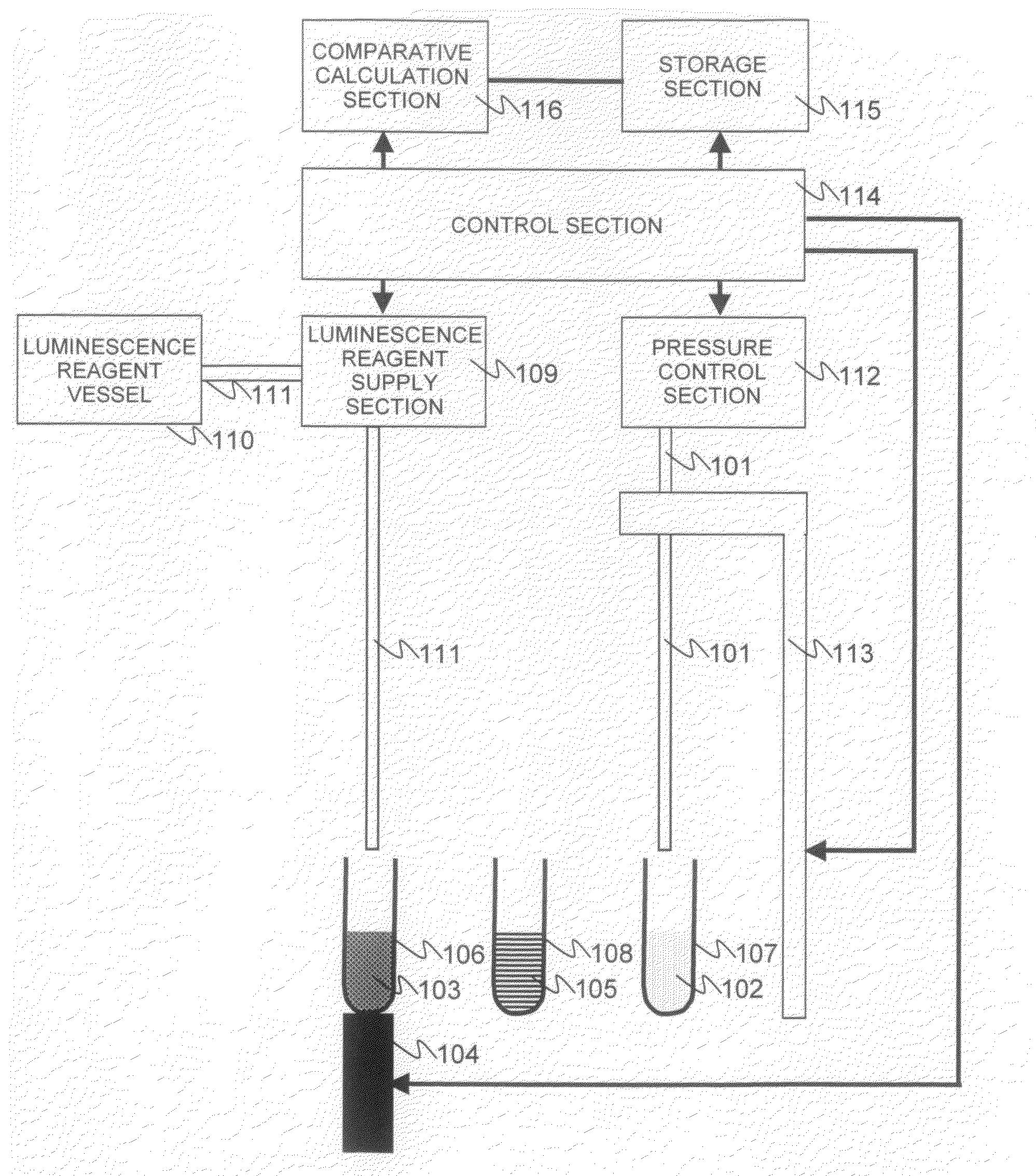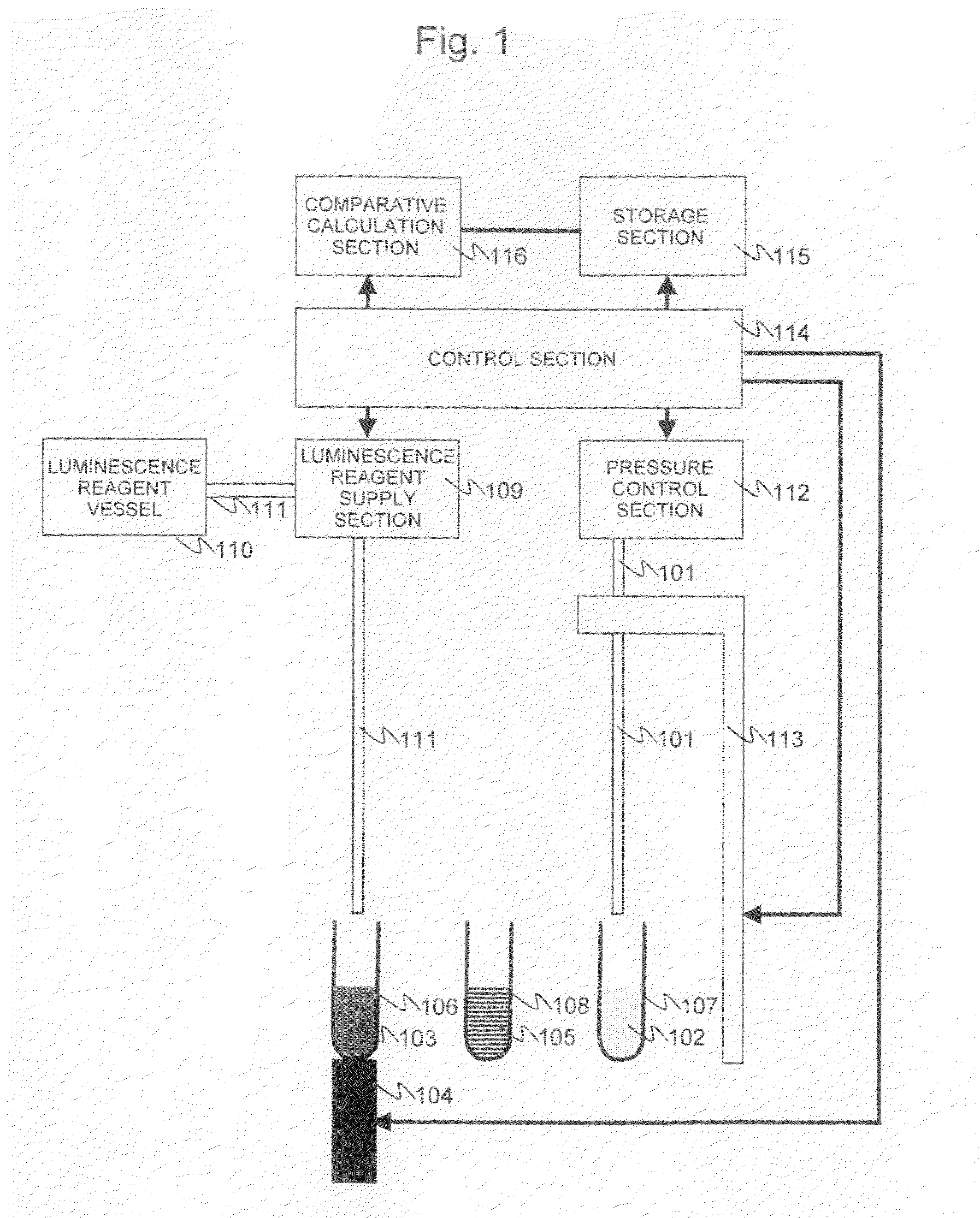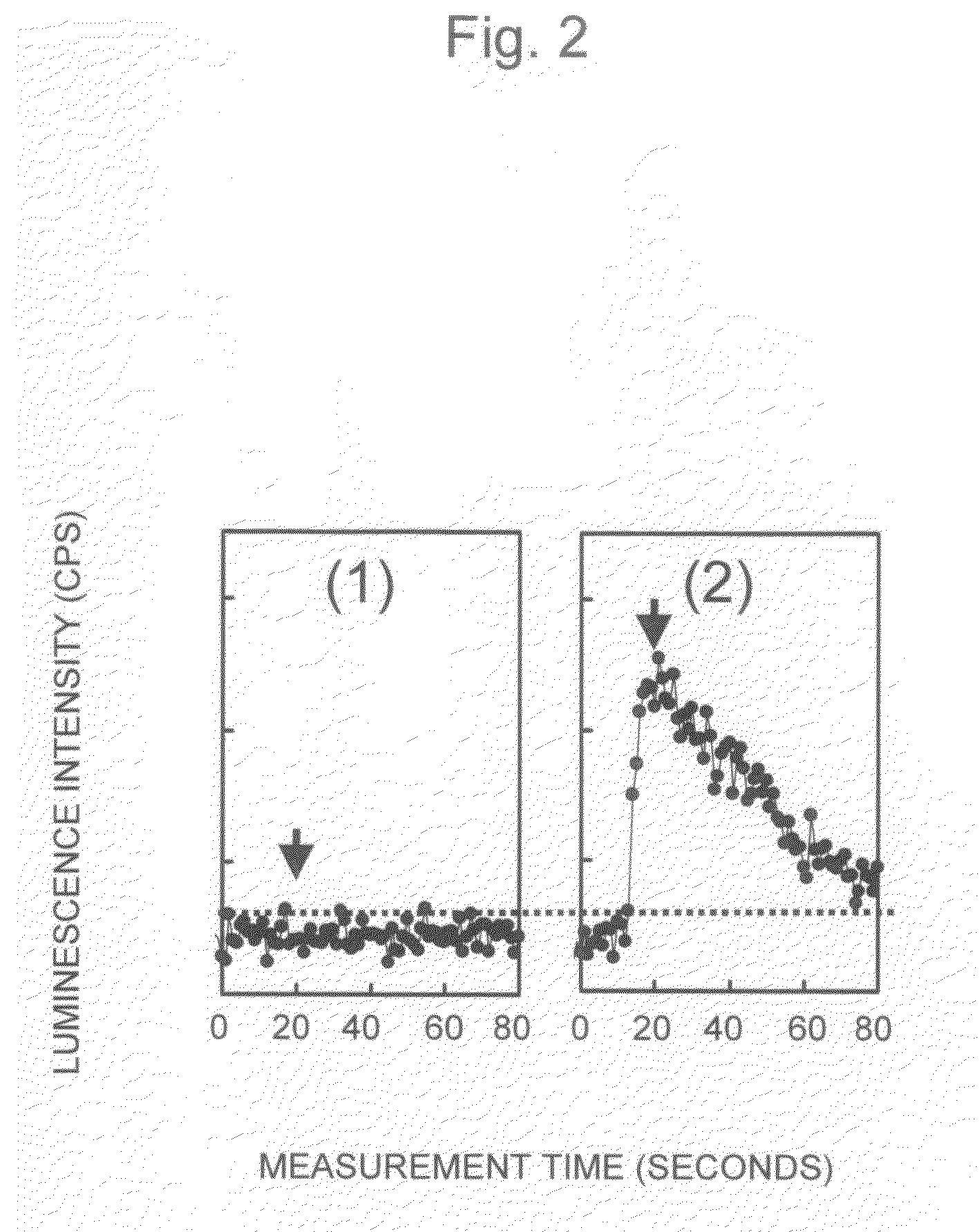Luminescence measuring apparatus
a technology of luminescence measuring apparatus and measuring device, which is applied in the direction of instruments, biomass after-treatment, material analysis through optical means, etc., can solve the problems of affecting measurement accuracy or sensitivity, the luminescence measuring method has an insufficient sensitivity for the environment monitoring application, and the time required for the washing step is reduced, so as to optimize the washing step. , the effect of reducing the time required for the washing step
- Summary
- Abstract
- Description
- Claims
- Application Information
AI Technical Summary
Benefits of technology
Problems solved by technology
Method used
Image
Examples
example 1
[0033]The configuration of a washing apparatus based on Example 1 will be described with reference to FIG. 1.
[0034]The washing apparatus is composed of a nozzle 101, a lysys solution 102, a luminescence reagent solution 103, a detection section 104, a sample solution 105, a reaction container 106, a lysys container 107, a sample container 108, a luminescence reagent supply section 109, a luminescence reagent vessel 110, piping 111, a pressure control section 112, an arm section 113, a control section 114, a storage section 115, and a comparative calculation section 116.
[0035]To examine the removal of viable bacteria adhering to the nozzle, first, the nozzle was washed using, for example, pure water for the conventional technique instead of the lysys solution 102, a component of the present invention (this is hereinafter referred to as washing A). Subsequently, for the present invention, the nozzle was washed using the lysys solution 102, a component of the present invention (this is...
example 2
[0047]In Example 2, examinations were made of the effects of the removal of Adenosine Tri Phosphate remaining in the opening of the nozzle 101 or on a wall of the nozzle when the nozzle dispenses the sample solution 105. In Example 2, the ATP solution was used as the sample solution 105. The sample solution may be a substance that emits light when subjected to a chemical reaction by an enzyme, such as luciferin, orthophosphoric monoester, or a peroxidase substrate.
[0048]Using the washing apparatus comprising the nozzle 101, the luminescence reagent solution 103, and the detection section 104, as well as the washing method and the luminescence measuring method, which are the characteristics of the present invention, the nozzle 101 was immersed first in the sample solution 105 in the sample container 108 and then in the luminescence reagent solution 103 in the reaction container 106. Adenosine Tri Phosphate from the sample solution 105 adhering to the nozzle 101 was decomposed. The no...
example 3
[0053]In Example 3, Adenosine Tri Phosphate and viable bacteria were quantitatively measured. An ATP solution or a bacteria suspension with viable bacteria lysed therein was used as the sample solution 105. The number of moles in the Adenosine Tri Phosphate added to the luminescence reagent solution 103 was set at 1, 2, 5, 10, 50, 100, and 1,000 atto mol. The microbial count was set at 1, 2, 5, 10, 20, and 45 CFU. The viable bacteria may be GRam-negative bacteria such as pseudomonas aeruginosa or serratia marcescens, Gram-positive bacteria such as basillus subtilis, micrococcus luteus, or staphylococcus aureus, or yeasts or fungi such as candida albicans, cryptococcus albidus, or saccharomyces cerevisiae. Since the viable bacteria are living cells and Adenosine Tri Phosphate is contained in all the cells, animal cells or plant cells that are living cells may be used.
[0054]The process in Example 3 will be described below. First, the viable bacteria adhering to the nozzle 101 were rem...
PUM
| Property | Measurement | Unit |
|---|---|---|
| pH | aaaaa | aaaaa |
| pH | aaaaa | aaaaa |
| luminescence measuring | aaaaa | aaaaa |
Abstract
Description
Claims
Application Information
 Login to View More
Login to View More - R&D
- Intellectual Property
- Life Sciences
- Materials
- Tech Scout
- Unparalleled Data Quality
- Higher Quality Content
- 60% Fewer Hallucinations
Browse by: Latest US Patents, China's latest patents, Technical Efficacy Thesaurus, Application Domain, Technology Topic, Popular Technical Reports.
© 2025 PatSnap. All rights reserved.Legal|Privacy policy|Modern Slavery Act Transparency Statement|Sitemap|About US| Contact US: help@patsnap.com



